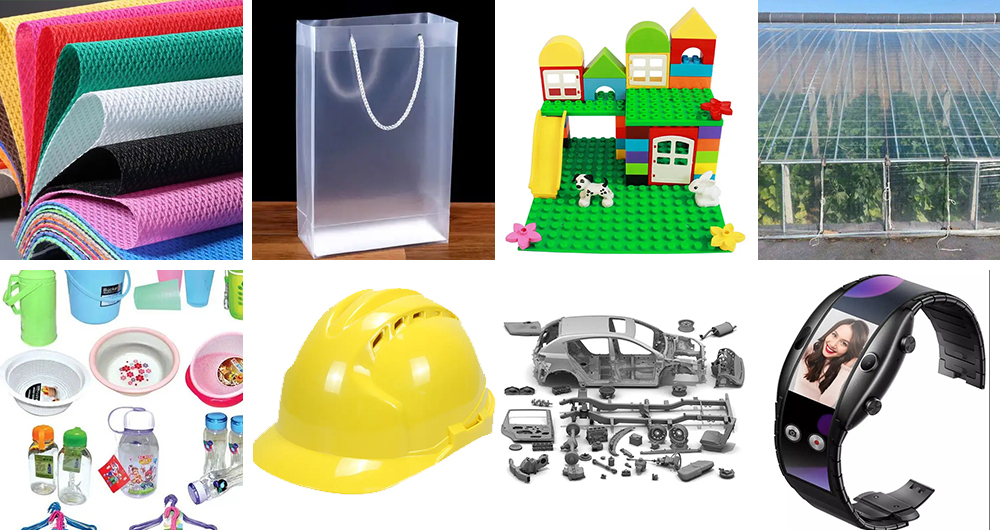After processed into pellets, waste plastics still have good overall material properties and can meet the technical requirements of film blowing, wire drawing, tube drawing, injection molding, extrusion profiles, etc. They are used in the production of plastic products in large quantities.
Article paragraph directory
Ⅰ. Application of plastic pellets
Ⅱ. The classification of waste plastics
Ⅰ. The application of plastic pellets
In daily life, recycled pellets can be used to make various plastic bags, buckets, tubs, toys, furniture, stationery and other household utensils and various plastic products. In garment industry, it can be used to make garments, ties, buttons and zippers. As for construction materials, they can be used to make various building components, construction tools, plastic doors and windows, and mud and ash buckets. In agriculture, it can be used to make agricultural film, water pumping pipe, agricultural machinery, fertilizer packaging bags, cement packaging bags. In machinery industry, the recycled granules can be used to make machine parts, various forms of bearings, gears, cams, different wheels, sealing rings, various blades, various pump impellers after special formulation. In the chemical industry, it can be used for reactors, pipes, containers, pumps, valves, etc., which are applied in chemical production sites to solve the corrosion and wear. In addition, recycled particles are also used in large quantities in the electrical industry and telecommunications industry

Ⅱ. The classification of waste plasticsCommonly used waste plastics are PE, PP, PVC, PET, EPS, PA, ABS
1. PET Polyethylene terephthalate, also known as polyester, is commonly used in PET bottles.
Characteristics: Highly symmetrical molecular structure, with a certain crystalline orientation ability, so it has high film-forming and forming properties.
PET has good optical properties and weathering resistance, and PET in amorphous state has good optical transparency. In addition, PET has excellent abrasion and friction resistance and dimensional stability and electrical insulation, PET bottles made of strength, good transparency, non-toxic, impermeable, light weight, high production efficiency, etc. Therefore, it is widely used.
2.HDPE PE is basically divided into three categories, high pressure low density polyethylene (LDPE), high density polyethylene (HDPE) and linear low density polyethylene (LLDPE).
Film is its main processed products, followed by sheet and coating, bottles, cans, barrels and other hollow containers and other kinds of injection and blow molding products, pipes and insulation and sheathing of wires and cables, etc.. It is mainly used in sectors such as packaging, agriculture and transportation.
HDPE High-density polyethylene is commonly used in detergent containers, milk bottles, supermarket bags.
LDPE Low-density polyethylene is commonly used for toothpaste or facial cleanser hose packaging.
PVC Polyvinyl Chloride - For example: water pipes, curtains, credit cards, packaging, water bottles, soft material films.
PVC is commonly used for pipes, outdoor furniture, and raincoats.
4.PP Polypropylene Polypropylene is commonly used in bottle caps, straws, microwave food containers.
Characteristics: Cheap, light, good processability and versatile. The development of catalysts and new processes has further contributed to the expansion of application areas, and it has been said that "as long as there is a product whose material is replaced by plastic, then that product has the potential to use polypropylene. Main uses: woven bags, tarpaulins, durable consumer goods: such as automobiles, home appliances and carpets.
5. PS polystyrene is divided into unfoamed or foamed. Not foamed that is polystyrene, commonly used in some beverage (such as Yakult) containers; has been foamed